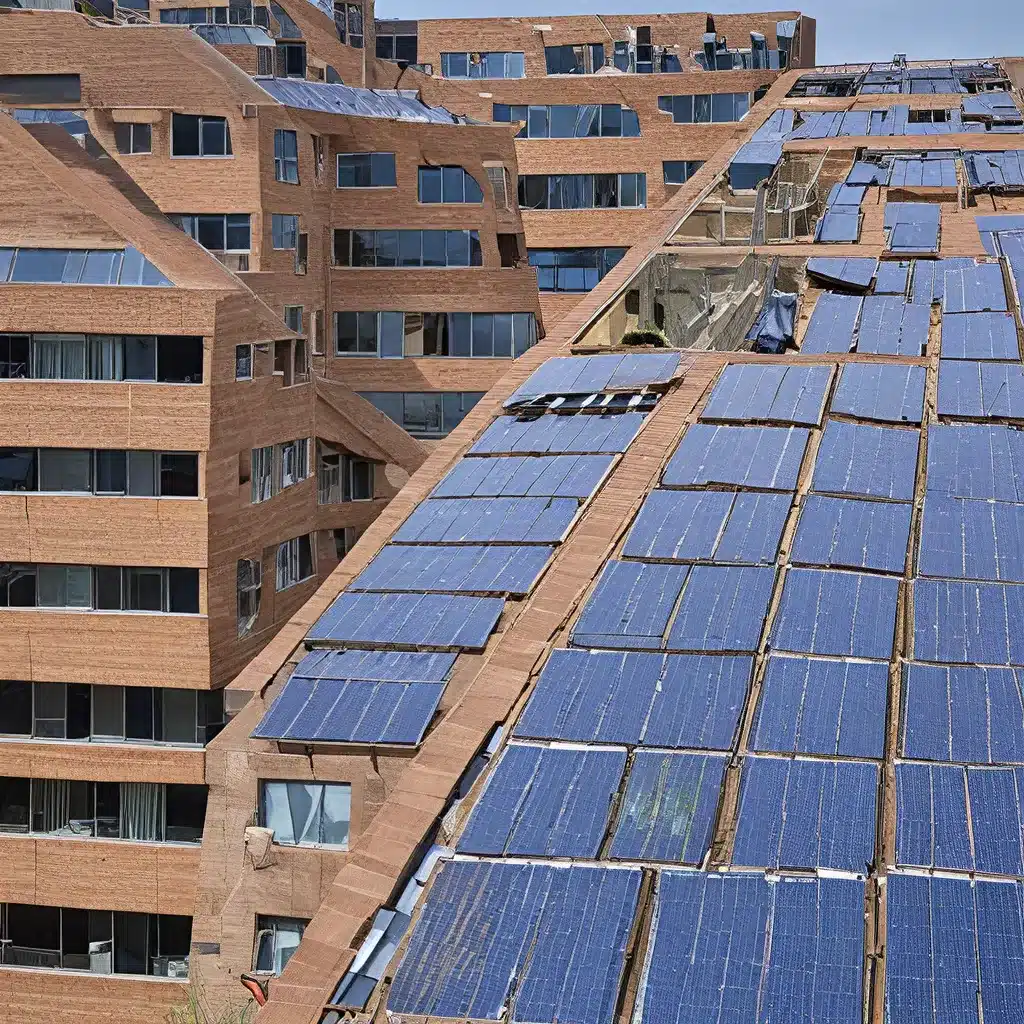
As someone who’s always been passionate about sustainability and the environment, I’ve been closely following the exciting developments in the world of renewable energy. It’s amazing to see how far the technology has come, and the incredible potential it holds for transforming the way we power our lives. But one area that’s always fascinated me is how we can harness these renewable solutions to improve the energy efficiency of our existing buildings.
Assessing the Renewable Energy Potential of Existing Structures
When it comes to integrating renewable energy into existing buildings, the first step is to conduct a thorough assessment of the property. This involves analyzing factors like the building’s orientation, roof space, shading patterns, and energy consumption habits. By understanding the unique characteristics of the structure, we can identify the most suitable renewable energy technologies and develop a strategic implementation plan.
One of the key considerations is the availability of roof space. Many existing buildings have untapped potential when it comes to rooftop solar photovoltaic (PV) systems. These systems can be seamlessly integrated into the building’s infrastructure, providing a clean and renewable source of electricity. Studies have shown that the rooftops of existing buildings in the United States have the potential to generate up to 1,118 terawatt-hours of solar energy per year, which is more than a third of the country’s total electricity consumption.
But solar PV isn’t the only renewable option to consider. Depending on the building’s location and climate, other technologies like wind turbines, geothermal systems, or even small-scale hydroelectric generators may also be viable. The key is to carefully evaluate the specific needs and constraints of the property to identify the most appropriate and cost-effective renewable energy solutions.
Overcoming the Challenges of Retrofitting Existing Buildings
I know what you’re thinking – “Sounds great, but isn’t retrofitting existing buildings with renewable energy a logistical nightmare?” And you’re not wrong. Integrating renewable systems into older structures can present a unique set of challenges that require careful planning and execution.
One of the biggest hurdles is the compatibility of the existing infrastructure. Many older buildings were not designed with renewable energy integration in mind, and their electrical, structural, and even architectural elements may need to be modified to accommodate the new technologies. This can be a complex and costly process, but research has shown that with proper planning and implementation, the benefits of incorporating renewable energy can outweigh the initial investment.
Another key consideration is the impact on the building’s aesthetics and historical significance. For buildings with cultural or architectural value, it’s crucial to find renewable solutions that seamlessly blend with the existing design, rather than compromising the structure’s visual appeal or historic character. This may require working closely with preservation experts and local authorities to ensure compliance with relevant regulations and guidelines.
Aligning Renewable Energy Integration with Building Sustainability Goals
But it’s not just about the technical and logistical challenges. Integrating renewable energy into existing buildings should also be part of a broader sustainability strategy that addresses the overall energy efficiency and environmental impact of the property.
The Guiding Principles for Sustainable Federal Buildings provide a comprehensive framework for evaluating and improving the sustainability of existing structures. These principles cover everything from energy and water conservation to indoor environmental quality and materials selection. By aligning the renewable energy integration process with these broader sustainability goals, building owners and managers can maximize the environmental and economic benefits of their investment.
For example, energy efficiency upgrades like improved insulation, high-performance windows, and LED lighting can significantly reduce a building’s overall energy demand, making the renewable energy system more effective and cost-efficient. Similarly, water conservation measures like greywater recycling and efficient plumbing fixtures can help offset the increased water usage associated with some renewable technologies, such as geothermal heat pumps.
Engaging Stakeholders and Fostering Collaborative Partnerships
Of course, integrating renewable energy into existing buildings is not a solo endeavor. It requires the collaboration and buy-in of various stakeholders, including building owners, property managers, occupants, local authorities, and renewable energy providers.
One crucial step is engaging with the building’s occupants and educating them on the benefits of renewable energy integration. By fostering a sense of community ownership and shared responsibility, you can encourage behavioral changes that complement the technical improvements, such as energy-conscious habits and reduced resource consumption.
Additionally, partnering with local renewable energy companies like Firewinder can provide invaluable expertise and support throughout the integration process. These specialized providers can help navigate the complex regulatory landscape, secure financing options, and ensure the seamless installation and maintenance of the renewable energy systems.
Embracing the Transformative Potential of Renewable Energy
As I reflect on the journey of integrating renewable energy into existing buildings, I can’t help but feel a sense of excitement and optimism. The potential for these solutions to transform the way we power our lives is truly remarkable. By harnessing the power of the sun, wind, and earth, we can not only reduce our carbon footprint but also create more sustainable and resilient communities.
Of course, the road ahead is not without its challenges, but I’m confident that with the right strategies, collaborative partnerships, and a relentless commitment to innovation, we can overcome these obstacles and unlock the full potential of renewable energy integration in existing buildings.
So, whether you’re a building owner, property manager, or simply someone who cares about the environment, I encourage you to explore the transformative possibilities of renewable energy integration. It’s a journey that’s not only good for the planet but can also bring significant economic and social benefits to your community.
Who knows, maybe one day we’ll look back on this period as the turning point in our collective effort to create a more sustainable and resilient built environment. And I, for one, can’t wait to be a part of that revolution.

